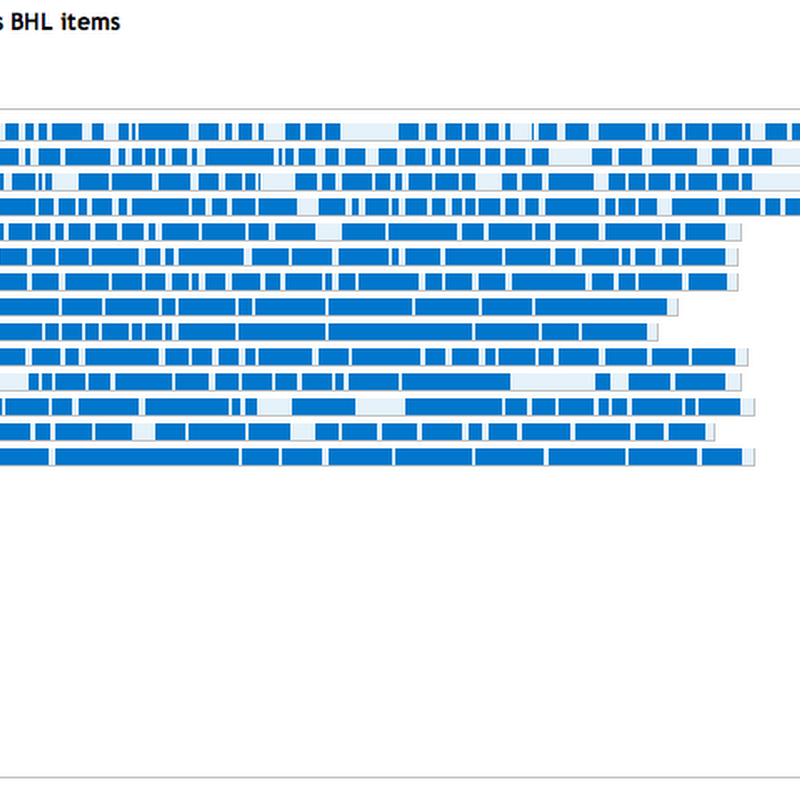It's Friday, so time for either a folly or a rant. BHL have put another user survey into the field http://www.surveymonkey.com/s/BHLsurvey. I loathe user surveys.
iPhylo

I've made some progress on a wiki of phylogenies. Still much to do, but here are some samples of what I'm trying to do. First up, here's an example of a publication http://iphylo.org/treebase/Doi:10.1016/j.ympev.2008.02.021: In addition to basic bibiographic details we have links to GenBank sequences and a phylogeny. The sequences are georeferenced, which enables us to generate a map.
I'm revisiting the idea of building a wiki of phylogenies using Semantic Mediawiki. One problem with a project like this is that it can rapidly explode.

A little while ago I came across Wikisource, and it dawned on me that this is a model for BHL. To quote from the Wikisource web site: Much of their content comes from the Internet Archive (as does BHL's), and Wikisource have developed extensions for Mediaiwki to do some cool things, such as extract text and images from DjVu files.

I've written up some thoughts on Wikipedia for a short invited review to appear (pending review) in Organisms, Environment, and Diversity (ISSN 1439-6092). The manuscript, entitled "Wikipedia as an encyclopaedia of life" is available as a preprint from Nature Precedings (hdl:10101/npre.2010.4242.1). The opening paragraph is: The content will be familiar to readers of this blog, although the essay is perhaps a slightly more sober

This year's Evolution meetings will feature a new satellite conference called iEvoBio.

Last month EOL took the brave step of including Wikipedia content in its pages. I say "brave" because early on EOL was pretty reluctant to embrace Wikipedia on this scale (see the report of the Informatics Advisory Group that I chaired back in 2008), and also because not all of EOL's curators have been thrilled with this development.

OK, first of all, I want one, I want one real bad. There's been a general sense of disappointment about the iPad, which I suspect is only natural given the enormous hype leading up to the announcement, as well as the fact that the applications shown were fairly conventional.

A quick, and not altogether satisfactory hack, but I've added a simple interactive treemap to BioStor. It's essentially a remake of the Catalogue of Life treemap I created in 2008, but coloured by the number of references I've extracted from BHL.

Jim Croft drew my attention to a cool crowd-sourcing project to convert scans of Australia's newspapers to text. The site has a nice chart showing the projects' coverage of the Australian newspapers, which motivated me to show something similar for BioStor. Each journal page now shows a chart of article coverage.